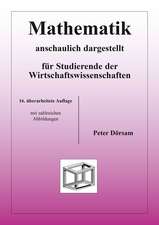.achine Learning for Civil and Environmental Engineers – A Practical Approach to Data–Driven Analysis, Explainability, and Causality
Autor MZ Naseren Limba Engleză Hardback – 25 oct 2023
Preț: 529.74 lei
Preț vechi: 575.80 lei
-8% Nou
Puncte Express: 795
Preț estimativ în valută:
101.37€ • 110.45$ • 85.42£
101.37€ • 110.45$ • 85.42£
Carte disponibilă
Livrare economică 29 martie-04 aprilie
Livrare express 19-25 martie pentru 63.56 lei
Preluare comenzi: 021 569.72.76
Specificații
ISBN-13: 9781119897606
ISBN-10: 1119897602
Pagini: 608
Dimensiuni: 217 x 284 x 37 mm
Greutate: 1.48 kg
Editura: Wiley
Locul publicării:Hoboken, United States
ISBN-10: 1119897602
Pagini: 608
Dimensiuni: 217 x 284 x 37 mm
Greutate: 1.48 kg
Editura: Wiley
Locul publicării:Hoboken, United States
Notă biografică
M.Z. Naser is a tenure-track faculty member at the School of Civil and Environmental Engineering & Earth Sciences, a member of the AI Research Institute for Science and Engineering (AIRISE) at Clemson University, USA. Dr. Naser has co-authored over 100 publications and has 10 years of experience in structural engineering and AI. His research interest spans causal & explainable AI methodologies to discover new knowledge hidden within the domains of structural & fire engineering and materials science to realize functional, sustainable, and resilient infrastructure. He is a registered professional engineer and a member of various international editorial boards and building committees.
Descriere scurtă
Cuprins
Preface xiii About the Companion Website xix 1 Teaching Methods for This Textbook 1 Synopsis 1 1.1 Education in Civil and Environmental Engineering 1 1.2 Machine Learning as an Educational Material 2 1.3 Possible Pathways for Course/Material Delivery 3 1.4 Typical Outline for Possible Means of Delivery 7 Chapter Blueprint 8 Questions and Problems 8 References 8 2 Introduction to Machine Learning 11 Synopsis 11 2.1 A Brief History of Machine Learning 11 2.2 Types of Learning 12 2.3 A Look into ML from the Lens of Civil and Environmental Engineering 15 2.4 Let Us Talk a Bit More about ML 17 2.5 ML Pipeline 18 2.6 Conclusions 27 Definitions 27 Chapter Blueprint 29 Questions and Problems 29 References 30 3 Data and Statistics 33 Synopsis 33 3.1 Data and Data Science 33 3.2 Types of Data 34 3.3 Dataset Development 37 3.4 Diagnosing and Handling Data 37 3.5 Visualizing Data 38 3.6 Exploring Data 59 3.7 Manipulating Data 66 3.8 Manipulation for Computer Vision 68 3.9 A Brief Review of Statistics 68 3.10 Conclusions 76 4 Machine Learning Algorithms 81 Synopsis 81 4.1 An Overview of Algorithms 81 4.2 Conclusions 127 5 Performance Fitness Indicators and Error Metrics 133 Synopsis 133 5.1 Introduction 133 5.2 The Need for Metrics and Indicators 134 5.3 Regression Metrics and Indicators 135 5.4 Classification Metrics and Indicators 142 5.5 Clustering Metrics and Indicators 142 5.6 Functional Metrics and Indicators* 151 5.7 Other Techniques (Beyond Metrics and Indicators) 154 5.8 Conclusions 159 6 Coding-free and Coding-based Approaches to Machine Learning 169 Synopsis 169 6.1 Coding-free Approach to ML 169 6.2 Coding-based Approach to ML 280 6.3 Conclusions 322 7 Explainability and Interpretability 327 7 Synopsis 327 7.1 The Need for Explainability 327 7.2 Explainability from a Philosophical Engineering Perspective* 329 7.3 Methods for Explainability and Interpretability 331 7.4 Examples 335 7.5 Conclusions 428 8 Causal Discovery and Causal Inference 433 Synopsis 433 8.1 Big Ideas Behind This Chapter 433 8.2 Re-visiting Experiments 434 8.3 Re-visiting Statistics and ML 435 8.4 Causality 436 8.5 Examples 451 8.6 A Note on Causality and ML 475 8.7 Conclusions 475 9 Advanced Topics (Synthetic and Augmented Data, Green ML, Symbolic Regression, Mapping Functions, Ensembles, and AutoML) 481 Synopsis 481 9.1 Synthetic and Augmented Data 481 9.2 Green ML 488 9.3 Symbolic Regression 498 9.4 Mapping Functions 529 9.5 Ensembles 539 9.6 AutoML 548 9.7 Conclusions 552 10 Recommendations, Suggestions, and Best Practices 559 Synopsis 559 10.1 Recommendations 559 10.2 Suggestions 564 10.3 Best Practices 566 11 Final Thoughts and Future Directions 573 Synopsis 573 11.1 Now 573 11.2 Tomorrow 573 11.3 Possible Ideas to Tackle 575 11.4 Conclusions 576 References 576 Index 577




























